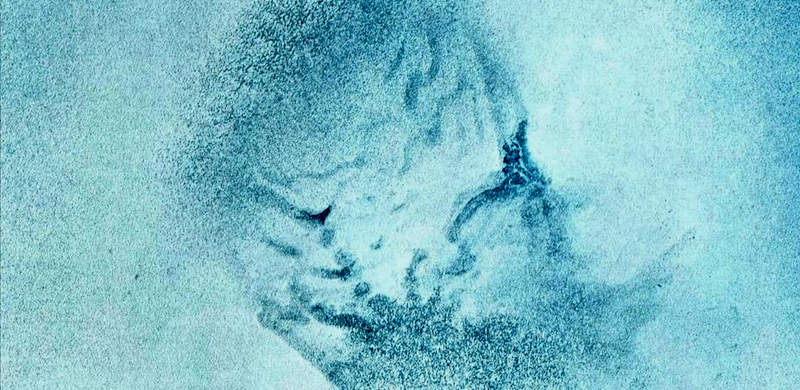
Tangerine Dream veteran Peter Baumann says the German group’s groundbreaker “Phaedra” was a result of “happy accidents” — not hallucinogenics.
“We didn’t have psychedelic drugs,” the keyboardist told Shindig! magazine in 2020. “The music was psychedelic enough.”
Tangerine Dream came out of West Berlin’s psychedelic/surrealist art scene, with that aesthetic permeating much of its work through the mid-1970s. Tape loops, analogue synthesizers, found sounds and typical rock instrumentation stirred the brew for the group’s first four experimental albums.
With 1974’s “Phaedra” came the introduction of a sequencer, leading almost immediately to what is widely recognized as the Tangerine Dream sound. That eerie pulsating wash would resound in myriad ways down the decades, across several genres and media.
While “Phaedra” broke new ground, technologically and in its aesthetics, it has many antecedents in rock and jazz:
Miles Davis entered his electronic phase in the summer of 1969 with “In a Silent Way.” The same year, the English group White Noise used an early synthesizer on its dark and loopy sonic collage “An Electric Storm.” Beaver & Krause released “The Nonesuch Guide to Electronic Music” in 1967, about the time they evangelized for the Moog synthesizer’s psychedelic potentials at the Monterey Pop Festival. Silver Apples operated out of the underground in the late ’60s.
Klaus Schulze, who briefly played drums in Tangerine Dream, released “Irrlicht” and “Cyborg” earlier in the 1970s, about the time Kraftwerk began its sonic adventures. And Tangerine Dream itself released a quartet of albums in its “pink years” before “Phaedra,” including “Alpha Centauri” and “Zeit,” both offering plenty of room to wander for heads.
Purists will point to even earlier pioneers in electronic music, such as the American minimalists Steven Reich and Terry Riley, both of whom found joy in repetition and built on the crazy-quilt compositions of Germany’s Karlheinz Stockhausen.
Tangerine Dream’s classic “Phaedra” came at the dimming of the first psychedelic period. It feeds off some of the great works of 1960s underground rock, notably those of Jimi Hendrix, King Crimson and band favorite Pink Floyd. (Tangerine Dream took its name from a misheard line in “Lucy in the Sky With Diamonds.”) The trio’s psychedelic roots ran deep.
Today we’d likely file “Phaedra” under electronica, trance, dark ambient or even progressive, but make no mistake: This is music for heads, strange, hypnotic and spacey. Group leader Edgar Froese called it kosmische musik.
The late ’60s brought quite a few adventurous long tracks to popular music, but few soundscapes as we know them were heard in rock music before “Phaedra.” Tangerine Dream elevated soundscapes to an artform.
“We were using the Moog sequencer for the first time,” Froese recalled of the sessions at the end of 1973. “Just tuning the instrument took several hours each day, because at the time there were no presets or memory banks. … Technically everything that could go wrong did go wrong.”
The hypnotic title track (18 minutes) took shape as group member Christopher Franke was experimenting with the sequencer. “Edgar and I were in the control room and thought, oh, that sounds great, let’s record it. That was the sequencer part (the driving bass notes) of ‘Phaedra,’ ” Baumann said. “Phaedra” took up half of the album and is at its heart.
One of Tangerine Dream’s early successes was in making electronic music that a lot of people could wrap their heads around. It felt like analogue music, even as it pointed to a digital future. The synthesizer-driven sound seemed less in the realm of the mad scientist and more in the realm of the artist. To the adventurous record buyer of 1974, “Phaedra” wasn’t easy listening, but it wasn’t work, either.
(“Phaedra” was one of Virgin Records’ first hits, following “Tubular Bells.” It cracked the top 20 in Britain and charted in the U.S.)
“Phaedra” gets the nod here as an originator, but the classic Tangerine Dream lineup of Edgar Froese, Peter Baumann and Christopher Franke went on to produce three other albums of similar quality, “Rubycon” (1975), “Ricochet” (1975) and “Stratosfear” (1976). All have their die-hard supporters. All exhibit mind-expanding properties.
Tangerine Dream became an institution of European music, releasing dozens of albums by an evolving cast working under Froese. The by-then instantly recognizable Tangerine Dream sound electrified the 1980s film scene via soundtracks for “Sorcerer,” “Thief,” “Risky Business” and many others. Critics might say the band became self-referential and overly commercial as it aged. It had its ups and downs. In any case the project continued up to and past Froese’s death in 2015.
Liner notes: Audio wizard Steven Wilson recently set out to create new stereo and 5.1 mixes of “Phaedra” using the original multitracks but only two tracks could be found. These are available on Virgin’s box set “In Search of Hades,” along with previously unreleased pieces from the session. Wilson’s two remixed tracks (“Phaedra” and “Sequent C”) also are available on the latest CD of “Phaedra,” following the original 38-minute album. … The multidisc set “In Search of Hades” remains a collector’s item, but can be found for about $150. … 1947’s “Music Out of the Moon” connected the celestial and the electronic three decades earlier. The album stars the theremin. You can experience it on Spotify.
Floyd-ish lol
I wore out 4 vinyl copies of that album, I played it so much. I still play it about every other week …
The album that created the Berlin School definitive sound of sequencer, lead lines, and washes of sound.
Such a great album
I remember when Phaedra first came out, it was definitely easy listening, especially the mellotron parts. I was already a Tangerine Dream fan to begin with.
Does anyone remember the, “Berlin in LA” series of events in LA, celebrating the culture of Berlin? Around 1974, I believe. One of those events was TD’s first LA concert at the Santa Monica Civic Auditorium. I was there, 10th row, floor center. You should’a been there.
The LA Santa Monica gig was 1980